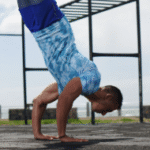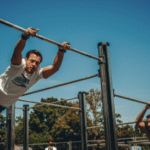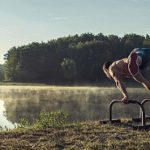Personalized Programming for Serious Calisthenics Athletes: The Blueprint for Elite Performance
For the serious calisthenics athlete in Houston, the journey progresses far beyond basic fitness. You’re no longer just trying to get in shape; you’re on a dedicated quest to master your body, unlock elite skills like the planche and front lever, and push the boundaries of what’s possible with bodyweight strength. At this level, a generic program downloaded from the internet is not just ineffective—it’s a roadblock.
True progress requires a personalized program, a meticulously crafted blueprint that accounts for your unique physiology, goals, and lifestyle. This guide details the essential components of elite-level programming and why a one-size-fits-all approach will always fall short.
Why Generic Programs Fail the Serious Athlete
Generic programs are designed for the masses. They are built on averages and cannot account for the specific variables that determine success at a high level.
They Don’t Address Your Specific Weak Links: Your progress might be stalled on the muscle-up not because of your pulling strength, but because of weak wrist stability or a lack of explosive power. A generic program will just tell you to “do more pull-ups,” while a personalized one will identify and target that specific weak link.
They Lack Proper Periodization: A serious athlete cannot train at 100% intensity all year round. This leads to burnout, overtraining, and injury. Personalized programming incorporates strategic periods of high intensity, volume, and active recovery (periodization) to ensure consistent, long-term progress.
They Ignore Your Lifestyle: Your recovery capacity is directly affected by your sleep, nutrition, and stress levels outside the gym. A personalized program can be adjusted based on your life’s demands, ensuring the training load is always appropriate.
They Don’t Align with Your Specific Goals: Your goal might be a 10-second freestanding handstand, while the generic program is focused on building general strength. Your training needs to be laser-focused on the specific demands of your chosen skills.
The Core Components of a Personalized Calisthenics Program
A high-level program, like one you’d receive from an expert coach in Houston, is built on a foundation of deep analysis and strategic planning.
The Comprehensive Initial Assessment
This is the cornerstone of personalization. It’s a deep dive into your current capabilities.
Skill Assessment: What skills can you currently perform and for how long? This includes max holds of foundational positions (hollow body, tuck planche, etc.).
Strength Assessment: What are your max reps on fundamental exercises (pull-ups, dips, push-ups, pistol squats)? This often includes weighted calisthenics to determine your absolute strength.
Mobility and Flexibility Assessment: Do you have the required range of motion in your wrists, shoulders, and hips to perform skills safely? A lack of shoulder flexion, for example, makes a straight handstand impossible.
Imbalance Identification: The assessment will reveal asymmetries in strength between your left and right sides, which need to be addressed to prevent injury.
Strategic Goal Setting
Together with your coach, you’ll define clear, measurable, and realistic goals within a specific timeframe.
Primary Goal: Choose 1-2 “focus skills” for a training cycle (e.g., “achieve a 3-second straddle planche”).
Secondary Goals: These are often strength-based goals that support the primary skill (e.g., “achieve a weighted dip with 50% of bodyweight”).
Program Periodization: The Art of a Training Cycle
Your program will be broken down into cycles (mesocycles), typically lasting 4-6 weeks. Each cycle has a specific focus.
Accumulation Phase (High Volume): The focus is on building work capacity and muscle mass. You’ll perform more sets and reps with slightly lower intensity.
Intensification Phase (High Intensity): The focus shifts to building maximal strength. You’ll work with harder progressions, lower reps, and more rest between sets.
Realization/Peaking Phase: This is where you test your new strength and attempt to hit new personal records or master your focus skill.
Deload Week: A planned week of reduced volume and intensity at the end of a cycle to allow your body and nervous system to fully recover and supercompensate, coming back stronger for the next cycle.
The Daily Workout Structure: A Balancing Act
Each workout is a carefully balanced session.
Skill Work First: Technical skill practice (like handstand balance or planche attempts) is always done first, when your nervous system is fresh and you can focus completely on technique.
Primary Strength Work: This is where you perform your main compound exercises for the day, focusing on progressive overload.
Accessory/Supplemental Work: These are exercises designed to target your identified weak links. If your weakness is scapular strength for the planche, this is where you’ll do drills like scapular push-ups and lean holds.
Prehab and Mobility: Each session ends with specific exercises to improve joint health and mobility, ensuring your body stays resilient.
Sample Weekly Structure for a Serious Athlete (Push/Pull/Legs Split)
This is an example of how a week might be structured to allow for adequate frequency and recovery.
Monday: Push (Horizontal & Vertical)
Skill: Handstand Balance Practice (5-10 mins)
Strength: Weighted Dips (4×5), Deficit Handstand Push-ups (4×6-8)
Accessory: Planche Leans (3x15s), Tricep Extensions
Prehab: Wrist conditioning, shoulder mobility
Tuesday: Pull (Horizontal & Vertical)
Skill: Front Lever Attempts/Progressions (5-10 mins)
Strength: Weighted Pull-ups (4×5), Archer Rows (4×6-8 per side)
Accessory: Bicep Curls, Face Pulls
Prehab: Scapular health drills, thoracic spine mobility
Wednesday: Legs & Core
Strength: Pistol Squats (4×6-8 per side), Nordic Hamstring Curls (4×5)
Accessory: Weighted Calf Raises, Hanging Leg Raises
Prehab: Hip mobility, ankle flexibility
Thursday: Rest or Active Recovery (e.g., light cardio, stretching)
Friday: Full Body Power/Skills Day
Skill: Muscle-up Technique or other dynamic skill
Power: Explosive Pull-ups, Clapping Push-ups
Full Body Strength: A lighter, full-body circuit focusing on perfect form.
Saturday & Sunday: Rest / Active Recovery
Conclusion:
For the serious calisthenics athlete in Houston, personalized programming is the bridge between having a strong foundation and achieving elite-level skills. It’s a dynamic, data-driven approach that respects your individuality and is built for long-term, sustainable progress. By moving away from generic templates and embracing a program designed specifically for you, you unlock a more efficient, safer, and ultimately more rewarding path to mastering your own bodyweight.
Personalized Programming for Serious Calisthenics Athletes: The Blueprint for Elite Performance
Personalized Programming for Serious Calisthenics Athletes: The Blueprint for Elite Performance
Route
Calisthenics Gym Houston Functional Bodyweight Training
Secondary phone: (346) 483-3195
Email: info@calisthenicsclubhouston.com
URL: https://calisthenicsclubhouston.com/
Monday 6:00 AM - 7:00 PM Tuesday 6:00 AM - 7:00 PM Wednesday 6:00 AM - 7:00 PM Thursday 6:00 AM - 7:00 PM Friday 12:00 PM - 6:30 PM Saturday 9:45 AM - 12:00 PM Sunday 3:00 PM - 5:00 PM






